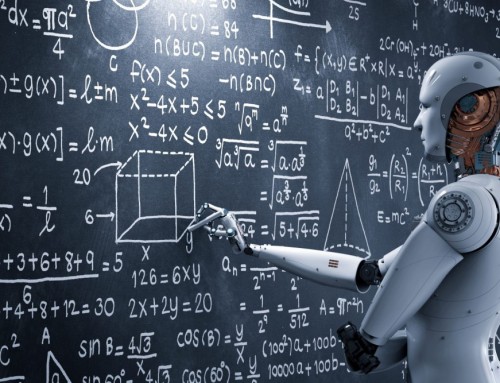The speed of light is considered the fastest speed possible in the universe; a speed so fast it was once thought infinite. Science now declares it a constant of nature and from this conclusion whole branches of scientific pursuit have emerged. To question its nature as a constant is a quick way to be discounted by the scientific community as a looney but is this too zealous a stance? Could the speed of light be changing? Some looneys definitely think so.
The speed of light will never alter, you could bet the family fortune on it. And the secret behind why is how it is defined.
Today we measure the speed of light with the help of laser technologies that have subatomic accuracy. Humanity has become exceptional at measuring things. Over a dozen methods for measuring light speed have been used throughout history but this is by far the most accurate. Results from state of the art laser measurements across the world are averaged and then produce a precise speed.
From there, ink is put to paper on textbooks across the world as students memorize the exact number for their physics exams.
299,792,458 meters per second.
The meter was originally defined by the French in 1795 as one/ten-millionth the circumference of the Earth at the equator. It was a significant improvement to some of its predecessors like the cubit, which was simply defined as the length of an outstretched human arm. Today, an exact physical representation of the meter resides in Paris in the form of a solid platinum iridium rod as it has since 1875.
But why does a discussion on the validity of the speed of light begin with the meter? Because the speed of light, before anything, is a measurement and it is measured in meters and seconds.
(seconds are measured using cesium clocks that release radiation in incredibly reliable increments; no obvious problems there.)
And so, to prove that the speed of light is constant in nature we first had to validate the meter. Without this, there would be no way of determining if the speed of light was changing or if it was instead minute differences in the length of the meter itself.
Once the standardized bars of the meter were sent out into the scientific community, scientists were convinced that their measurements would be uniform across the world. And they were for a few years. But year to year, the speed of light fluctuated.
Spanning the majority of the 1900s, roughly a 20m/s fluctuation of the yearly averaged speed of light was noticed in the scientific community. This was quite a large range for experiments that only allowed for errors of a fraction of a m/s.
The meteorologists who were responsible for accurately measuring the speed of light were rightly embarrassed. How could this happen? The speed of light is a constant of nature!
In order to fix the problem, the metrologist community did something both ingenious and idiotic. In 1983, the International Bureau of Weights and Measures proclaimed that the meter should be defined as the distance it takes light to travel in a vacuum in 1/299,792,458th of a second.
Since this historic moment, scientists have defined the speed of light using the meter and then turned around and used the meter to define the speed of light. If this sounds like circular reasoning, it is because it is circular reasoning.
The grandfather paradox of the metrologist world.
Using this method for defining the speed of light and the meter, we have absolutely no way to determine if the speed of light is changing because the units would simply change with it and no one would be the wiser.
By pure definition, we have made the speed of light constant and incapable of change.
The Vacuum
All of this debate on the speed of light fluctuating has been strictly referring to the speed of light in a vacuum, or empty space.
It is well known by the scientific community that the speed of light does vary in different mediums. The denser a medium, the more light is slowed down. This is because in a dense medium, photons of light are more likely to run into an atom; causing the photon to be absorbed and then reemitted. This phenomenon explains why a straight straw looks bent when placed halfway in water. In a extremely dense medium like diamond, light speed is nearly cut in half.
However, new research at both the University of Paris-Sud and the Max Plank Institute have shown that light speed might also vary in a vacuum because even a vacuum has been found to not be empty. In fact, the vacuum hosts all sorts of exotic particles that pop in and out of existence as antiparticle-particle pairs. The amount of these “virtual particles” correlates to the amount of actual particles that make up our world and may even be the reason that the speed of light is this specific finite speed rather than infinite according to a study by Gerd Leuchs and Luis Sanchez-Soto.
Furthermore, research published in 2014 out of the University of Glaslow, showed that even in a vacuum, the speed of photons could be altered by changing their structure. This was done by shooting off pairs of photons and measuring their speeds. When one photon of the pair was then manipulated to have its structure altered, it significantly slowed down.
This may seem like only a trick possible in laboratories, but in reality, every day we witness the structure of a light wave be altered by focusing lenses or laser pointers. A naturally emitting light wave from a source like the sun would have a much different structure than one from the point of a laser.
This thinking has caused some scientists to even question the accuracy of the speed of light tested by laser technology because the structure of the light emitted by these lasers may be altered. From a spherical source like the Sun, the speed of photon groups may be different.
Perhaps we should call our modern measurements the speed of laser light.
Einstein
Even Einstein himself played around with the idea of a variable speed of light. A man who was remembered for solidifying the constancy of light was actually a proponent of variable speeds of light untill his death; however, he did modify his theories of general relativity to only allow for the speed of light to change due to gravitational fields.
“The principle of the constancy of the speed of light can be kept only when one restricts oneself to space-time regions of constant gravitational potential.” -Albert Einstein
Although, Einstein did believe that the speed of light was the same from all reference frames with respect to velocity.
The best example of this type of consistency of the speed of light is the hypothetical scenario where an observer first records the speed of light shot out from a flash light and then measured the speed of light again when the flash light is put on a plane traveling at 1500mph.
One might expect that the second scenario, where the flashlight is on a speeding plane, would cause the speed of light to increase 1500mph. However, according to the theory of general relativity and observed experiments, this is not the case. The speed of light cannot be altered by adding or subtracting velocity from the light source.
The speed of light seems to obey a cosmic speed limit.
The Cosmic Speed Limit
The right way to think of it is that the cosmic speed limit doesn’t really have anything to do with light. Light is simply the fastest thing in the universe because it has no mass and is thus able to reach the cosmic speed limit. The limit is really something much more, it is the speed of causality in the universe.
No physical interaction in the universe can be propagated across space faster than the limit of 299,792,458 meters per second. Even gravitational waves cannot exceed the limit. Some may point to the instantaneous “spooky action at a distance” that can be observed in quantumly entangled particle pairs but this type of interaction can allow for no information to be transferred and thus does not break the cosmic speed limit.
But even this cosmic speed limit is set and defined by humans using the speed of light in a vacuum. That same speed of light which inherently has the same flaw of circular measurements. If the cosmic speed limit changed we would likewise be oblivious.
The Dogma
Even with these arguments, it still seems the most prudent view to believe that the speed of light is fairly constant and that the cosmic speed limit is unchanging. But what examples like this do point out is that even science can take a dogmatic view of how nature should be and then spread the dogma into all branches of science. From there scientists build careers and are endowed with financial grants that depend heavily on the current understanding of nature to be upheld.
The cosmic speed limit does not just effect the study of large bodies like astronomy and the big bang, but also seeps into the world of particle physics with equations like E=MC^2 (in which C is the speed of light in a vacuum) and practical light based technologies.
Science is the pursuit of the truth and perhaps some of these fundamental truths taught to us by the hallowed scientists of old are met with too much reverence. We must continue to question and tear down the old pillars of reason if they were built upon faulty foundations.
“Science advances one death at a time.” – Max Plank
But from the death of old dogma comes new understanding and opportunity; an evolution that should be no stranger to science at all.
2 papers: European Physics Journal D in March via an article by Livescience
Marcel Urban of the Université du Paris-Sud, “the amount of time the light takes to cross a given distance should vary as the square root of that distance, though the effect would be very tiny — on the order of 0.05 femtoseconds for every square meter of vacuum.”
Gerd Leuchs and Luis Sánchez-Soto, from the Max Planck Institute for the Physics of Light in Erlangen, Germany, “the number of species of elementary particle that exist in the universe may be what makes the speed of light what it is.”







Leave A Comment